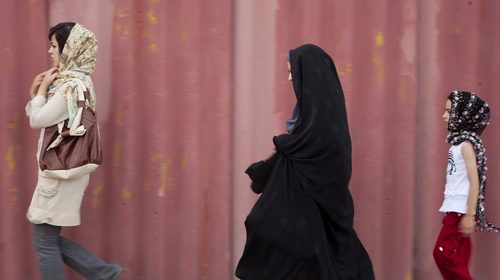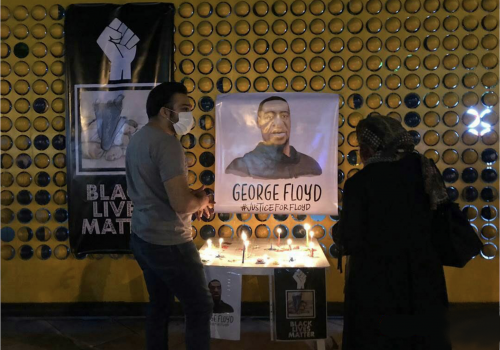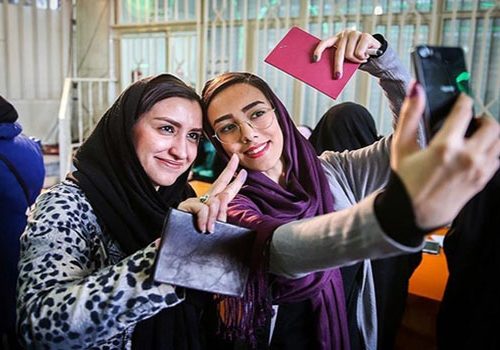The new Iranian child protection law is holistic, but discriminatory
On June 7, the Guardian Council—an un-elected body responsible for oversight of laws and orders by parliament—approved a bill to protect children and adolescents in Iran. The move marked a historic day for children and children’s rights activists in Iran. It was noteworthy particularly because children’s rights activists have been waiting for a holistic law to protect all children in Iran since July 1994, when Iran ratified the UN’s Convention on the Rights of the Child.
From 1994, legislatives in Iran have been postponing protecting children’s rights as they believed that Islamic law or other legislation was sufficient to protect children, even while these bills protect hegemonic and traditional masculine gender norms and cultural values that favor adult men.
Since May 2009, when Iran’s Judiciary sent the first draft of the child and adolescent protection bill to the government, two presidencies and three sessions of parliaments have been involved with the bill. At the beginning of each session of parliament, the government has sent the original bill to members of parliaments and supposedly prioritized it for review. The first revised version of the bill was sent to the Guardian Council in mid-September 2018, after almost nine years of drafting.
The Guardian Council endorsed the bill on June 7, less than three weeks after the tragic death of Romina Ashrafi, a 14-year-old girl, who was brutally murdered and beheaded with a sickle by her father in Gilan province in northern Iran. Some Iranian activists and journalists are now referring to the new law as “Romina’s law.” They believe that had it not been for her tragic killing, they would still be waiting for the Guardian Council to approve the law to protect all children. However, the pattern of communication between the Guardian Council and parliament shows that Romina’s murder and approval of the law were coincidental.
From September 2018 to June 7, 2020, the bill to protect children and adolescents has been rejected by the Guardian Council three times. For each rejection, the Guardian Council reviewed the bill in less than a month. In contrast, parliament spent four to seven months revising the latest bill based on the Guardian Council’s comments and advice, most of which weakened the legislation. On June 7, the day the bill was approved by the Guardian Council, it had been exactly three weeks since it had received the latest version of the bill from parliament.
It’s worth noting there is also evidence of parliament not prioritizing the legislation. Both members of the eighth and ninth sessions of parliament repeatedly said the child and adolescent protection bill was not their top priority. They claimed that their priorities lie with the economy and financial challenges of the country. Additionally, laws in Iran are not always enforced due to corruption within the government and the lack of oversight.
Now, after a decade of waiting for the bill to pass into law, the main question remains: is it able to protect all children based on their best interests and without discrimination? It’s worth mentioning that both parliament and the Guardian Council made changes to the first draft of the bill and turned it into a more discriminatory and exclusive law. According to the latest version, child-marriage continues to be legal, which favors gender discrimination. The new bill refers to the age of puberty based on Sharia law: nine for girls and 15 for boys. This suggests that girls are more affected by child-marriage and can get married even below the legal age of 13, based on article 1041 of the Civil Code in Iran. The bill also doesn’t address juveniles sentenced to death. Based on article 91 of the Islamic Penal Code, individuals under the age of 18 who understand the gravity of the crime—if the judge finds them mature—can face the death penalty.
In some articles of the new legislation, the conflict between the best interest of the child and the power of the family, especially the father, make it difficult or close to impossible to protect children from all forms of abuse and neglect. Furthermore, punishments in the bill for child abuse and neglect are not a sufficient deterrence. Thus, even if the law had been passed before Romina’s murder, her father, who is now is in prison and awaiting trial, may have faced minimum imprisonment, three to ten years. To top it off, the root of child abuse, such as child labor or school dropouts, is often poverty, which hasn’t been addressed, either. The bill also doesn’t deal with issues related to child soldiers or children who’ve been affected by armed conflict.
Despite its shortcomings, the bill is still a significant step towards protecting children and adolescents in Iran and serves as an essential resource for activists and legal professionals. With the exception of emotional and verbal abuse, the bill addresses almost all forms of abuse. It even covers child neglect. The bill also takes a multisectoral systemic approach and outlines the names and the duties of all bodies that are responsible to protect children—from ministries and media to everyday citizens and activists.
The first law to protect children in Iran was adopted in 2002, which included limited protection but lacked details. Since then, child abuse has been recognized as a “public crime”—a crime that can be prosecuted by the state—and one that all citizens must report. The new law makes this clearer and provides punishment for those who witness child abuse but remain silent, with vague exceptions. Based on the new law, the child abuse witness has to report it if it doesn’t put him or her in a more dangerous situation or has less but significant risk. Professionals believe this provision gives witnesses an excuse not to report child abuse in many cases. In the new bill a child also has the right to offer opinions in court and can also file as complainants. Education, social norms and cultural change, and prevention are other strengths of the new law that gives hope for the future protection of children in Iran.
Now that there is a child protection law, the first and most important step for activists is to educate citizens, including children and their families, about their rights and inform them about their responsibilities based on the new bill. UNICEF in Iran and the UN Committee of the Rights of the Child play an important role in this journey.
Iranian society and the international community—including the United Nations and its special rapporteurs—as well as the western and Iranian media, all play a role in monitoring human rights abuse in Iran. They are also responsible for closely following the ratification of the child and adolescent protection bill in Iran and to criticize its shortcomings and discriminations until Iran passes a non-discriminatory law that is based on the best interests of all children.
Hamed Farmand is a children’s rights activist and founder of the non-profit organization, Children of Imprisoned Parents International (COIPI). He is a research consultant at Abdorrahman Boroumand Center, a nonprofit organization dedicated to the promotion of human rights and democracy in Iran. Follow him on Twitter: @ha_fa54.
Image: School girls walk down the street in village of Aradan, east of Tehran, March 12, 2008. REUTERS/Ahmed Jadallah


